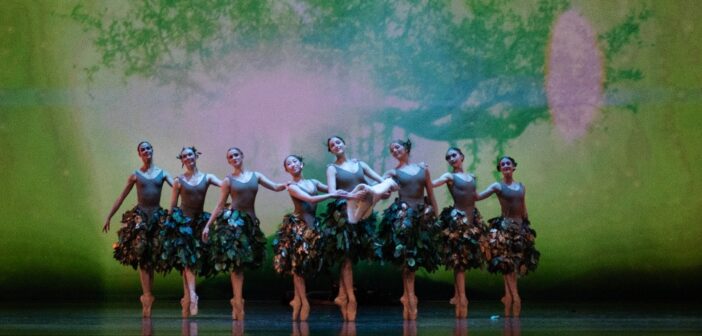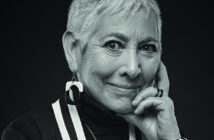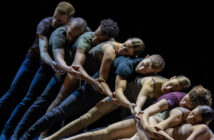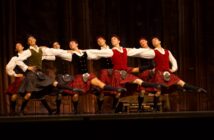Francesco Ventriglia became artistic director of Alberta Ballet in early 2024 with a vision: to blend tradition with innovation, to maintain the company’s roots in classical ballet while also exploring what it means to be a ballet company in the modern world. With his first production of the season, Ventriglia triumphed with one of the most traditional of all ballets, La Sylphide. His venture into innovation for his second production, Grimm (seen in Edmonton on October 25 and 26), proved to be far less exciting — but not because of the always excellent dancers.
Choreographed for the company by Stefania Ballone, a former colleague of Ventriglia’s from Milan’s Teatro alla Scala, Grimm is based on the famous original stories of the titular brothers. Truly grim and often horribly violent, these are not the sanitised versions read to generations of children and turned into beloved movies in the 20th century. Intended for adults, though with little to disturb even the youngest child, Ballone’s piece began with a character inspired by “The Sleeping Beauty:” a girl named Aura, born deep in the woods to a witch who dies in childbirth.
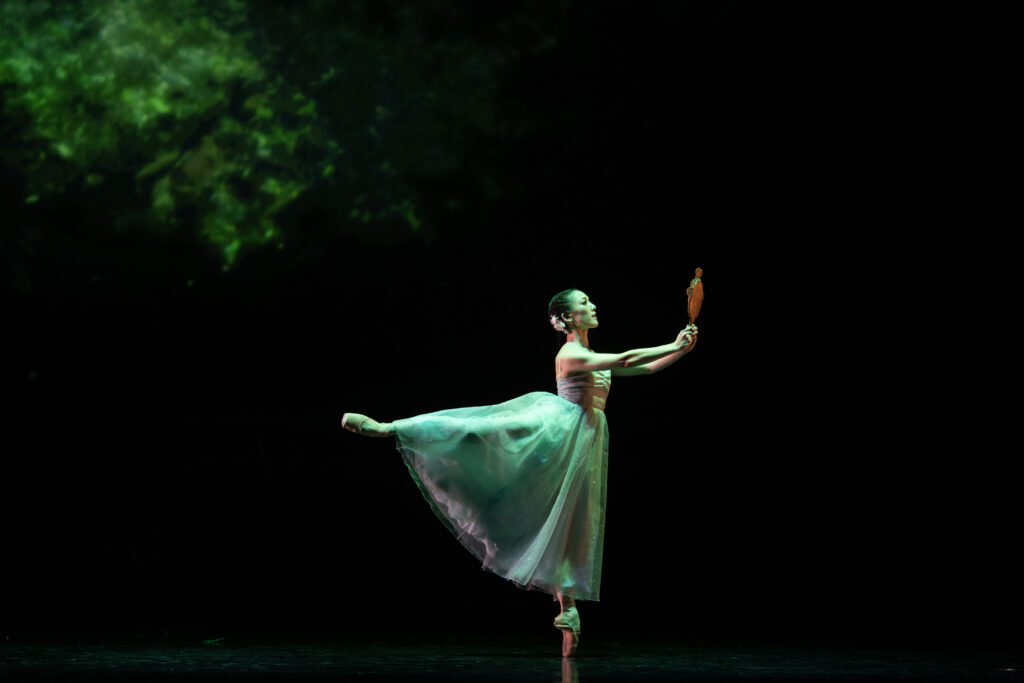
Luna Sasaki (Aura 3) in Alberta Ballet’s Grimm. Photo: Paul McGrath
From there, the programme summary proved a vital guide to the complicated journey on which Aura—danced in turn by Hinata Takahara (Aura 1), Hotaru Maruyama (Aura 2), and Luna Sasaki (Aura 3)—soon embarked. She meets the Bremen Town Musicians, the Frog Prince, Snow White’s wicked stepmother, the seven dwarves, and Rapunzel, as well as characters from lesser-known stories, including “The Three Spinners” and “The Seven Ravens.”
Weaving so many disparate tales together is not an easy task. The thread binding them together—according to Ballone, the lessons learned by Aura on her travels, such as the virtue of friendship and solidarity—was often hard to find. A voice-over narration throughout (there was a short spoken introduction, in good fairy tale tradition) could have helped, but even more, Grimm needed far more expressive and creative storytelling embedded in both the choreography and the score (by Taketo Gohara, the music rarely added atmosphere to the action).
There were beautiful moments, particularly in the show’s two major duets. The first, between the Frog Prince (Lang Ma) and the Princess (Macyn Malana Vogt) was exquisite. The second, at the very end of the show between Aura 3 (Luna Sasaki) and The Kiss Prince (Scotto Hamed-Ramos), was so beautiful as to induce tears. But aside from these duets, the dance of the eight Rapunzels was the only other segment to capture both the weird horror and eerie sexuality of the original Grimm folktales. As a result, the work felt both under-thought and under-choreographed.
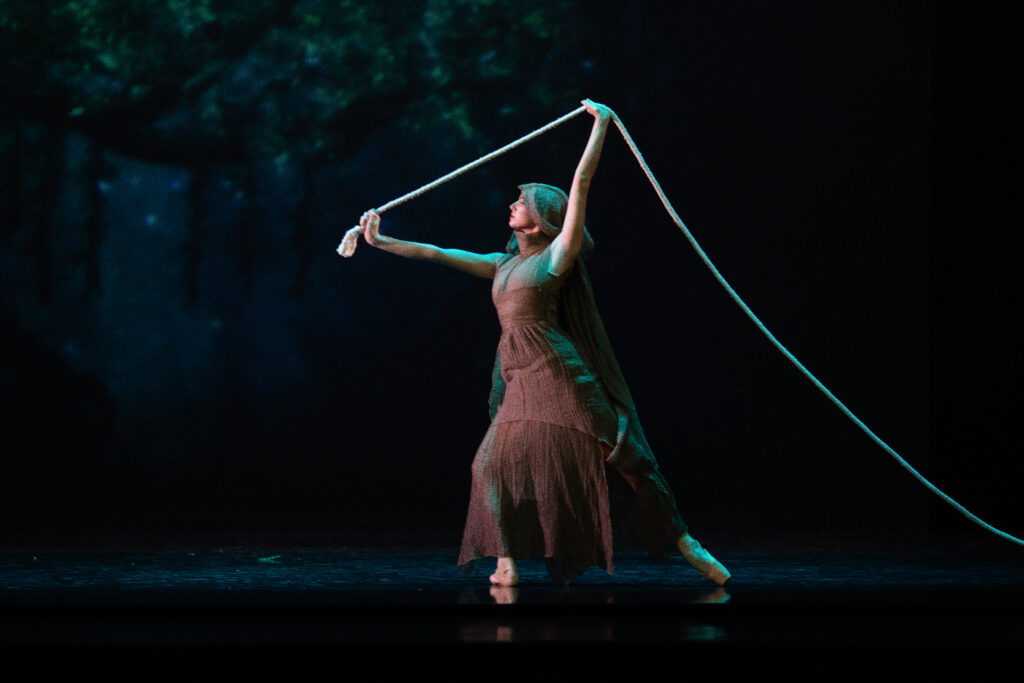
Jolie Rose Lombardo (Wicked Stepmother) in Alberta Ballet’s Grimm. Photo: Paul McGrath
It’s not easy to figure out what to do with a large group of some 30 dancers over an evening-length work, and Ballone clearly ran out of ideas. Tacked on at the very beginning was a Prologue described in the programme as a tribute to dance as “another form of language that is expressed through the body,” where “different voices in different languages narrate moments from the Grimm stories, resonating with the brilliant movement of the dancers.” Ok. But mostly it was a way to use the entire company that, while entertaining, made no narrative sense. It also made little narrative sense to have three different Auras; it simply gave opportunities for two more dancers to shine.
A bigger issue, though, was far too much choreography that did not take advantage of the significant technical and acting skills of this fine company.
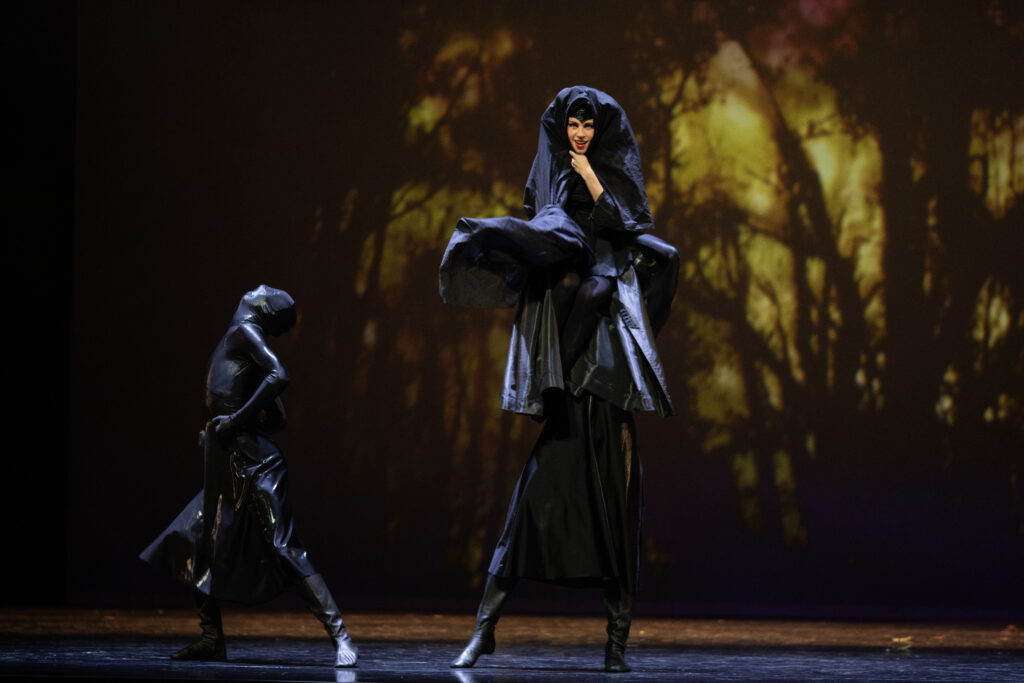
Alison Perhach (Wicked Stepmother) in Alberta Ballet’s Grimm. Photo: Paul McGrath
The wicked stepmother (Alison Perhach on the 25th and Jolie Rose Lombardo on the 26th), for example, did very little actual dancing. Instead, she stared far too long into her mirror and gestured far too much with her arms (though Perhach did manage to appear remarkably menacing while doing so). The Bremen Town Musicians, made up of a Dog (Dylan West), a Rooster (Mirko Melandri), a Donkey (Scotto Hamed-Ramos), and a Cat (Lombardo on the 25th and Perhach on the 26th), were a pleasant group of humans attired in animal masks. Where were their animal characters, where was the fun?
More serious still, why did the Seven Dwarves not light the house on fire? Here were seven young, gifted, unbelievably energetic male dancers who should have stomped and roared and flown, but instead were confined by perfectly nice choreography. And that pretty much describes the whole show: perfectly nice when, with such astounding source material, it could have been much more. Keep the evocative video designs by Peter Venus and the clever costumes by Eleonora Peronetti, but deepen the choreography to challenge the dancers and fully immerse the audience in the extraordinary worlds created by Jacob and Wilhelm Grimm.
Alberta Ballet’s The Nutcracker runs In Edmonton, December 4 – 8, and in Calgary, December 13 – 24

